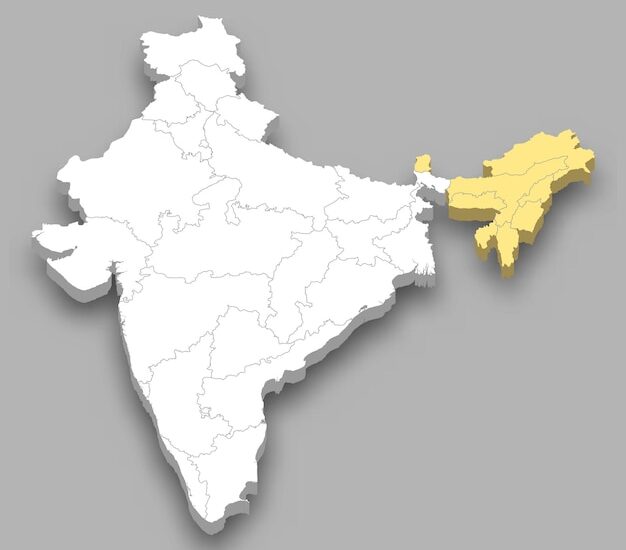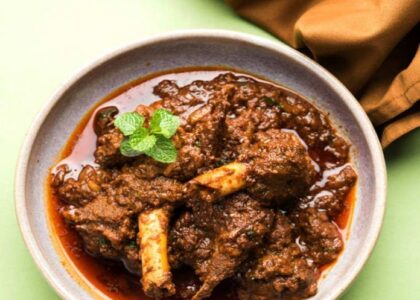The Indian subcontinent is a tapestry of diverse cultures, languages, and landscapes, but one region stands out as distinct and separate—North-East India. Bordered by Bhutan, China, Myanmar, Bangladesh, and the rest of India, this corner of the country has a unique historical, geographical, and cultural narrative that sets it apart from the rest of mainland India. In this blog, we delve into the intriguing question of why North-East India was never fully integrated into mainland India.
1. Geographic Isolation:
One of the most significant factors contributing to the separation of North-East India from the rest of the country is its geographic isolation. The region is bounded by the formidable Himalayan mountain range to the north and the densely forested Patkai and Naga Hills to the south. This natural barrier has limited overland access, making the region relatively isolated and difficult to access from the rest of India.
2. Cultural Diversity:
North-East India is a cultural mosaic, with over 200 ethnic groups and languages spoken in the region. The diverse cultural tapestry includes indigenous tribes with their distinct traditions, languages, and belief systems. This cultural richness has contributed to a sense of identity and autonomy among the people of North-East India.
3. Historical Factors:
Historically, the North-Eastern region has been connected more closely to Southeast Asia than to mainland India. The ancient Silk Route facilitated trade and cultural exchanges between this region and Southeast Asian kingdoms. As a result, the historical ties between North-East India and the Indian heartland were less prominent compared to other regions.
4. British Colonial Legacy:
During the British colonial period, the North-Eastern region was administered separately from the rest of India. The British colonial administration recognized the unique characteristics of the region and governed it as a distinct entity. This separation persisted even after India gained independence in 1947.
5. Strategic Border Regions:
The North-Eastern states share international borders with several neighboring countries, including China, Myanmar, and Bangladesh. Given their strategic location, these states have been of immense importance to India’s security and foreign policy. This has further contributed to the region’s distinct identity and unique status.
6. Political and Ethnic Complexities:
The region has witnessed political complexities, including separatist movements and ethnic tensions. These factors have sometimes led to a sense of isolation and autonomy among the various communities in North-East India.
7. Administrative Measures:
To address the region’s unique challenges and foster development, the Indian government has established the North-Eastern Council (NEC) and the Ministry of Development of North Eastern Region (DoNER). These administrative bodies are dedicated to addressing the region’s specific needs and concerns.
In conclusion, North-East India’s separation from mainland India is a result of a complex interplay of historical, geographical, cultural, and administrative factors. While the region remains distinct in many ways, efforts are ongoing to foster greater integration and development, recognizing the rich cultural heritage and unique identity of North-East India. This region continues to be a fascinating and integral part of the diverse tapestry of the Indian subcontinent.
-
Rustic, Real, and Regional: Kullu Trout for Every Food Lover
Spread the loveIf you are craving a wholesome, flavorful fish dish that’s both light and satisfying, Kullu Trout is the answer. Hailing from the scenic valleys of Himachal Pradesh, this trout preparation is a tribute to simplicity — where the freshness of the fish is allowed to shine through, enhanced only by subtle spices and…
-
Flavorful Himachali Chha Gosht Recipe You Can Cook Easily at Home
Spread the loveIf you are looking to bring bold, regional Indian flavors to your kitchen, Chha Gosht is a must-try. This Himachali lamb curry is a rustic, aromatic dish made with marinated lamb slow-cooked in a yogurt-based gravy thickened with roasted gram flour (besan). Rich in spices like cardamom, coriander, bay leaf, and ginger, it…
-
Flame-Kissed Perfection: Rajasthani Kalmi Kebab at Home
Spread the loveWhen it comes to Indian starters that leave a lasting impression, Kalmi Kebab stands tall with its smoky aroma, melt-in-your-mouth tenderness, and bold, royal flavors. Originating from the princely kitchens of Rajasthan, this grilled chicken dish has become a favorite across India, especially at festive dinners, barbecues, and celebratory gatherings. The best part?…
-
Authentic Rajasthani Dahi ke Kebab Recipe for Home Cooks
Spread the loveAmong the many gems of Rajasthani fare, one dish that stands out for its elegance and surprising simplicity is the Dahi ke Kebab — soft, creamy yogurt-based kebabs that melt in your mouth. Often served as an appetizer in royal thalis or festive meals, Dahi ke Kebab (Yogurt Kebabs) are a vegetarian’s delight.…
-
Bring Jodhpur to Your Kitchen with This Easy Kachori Recipe
Spread the loveWhen it comes to Indian street food, few snacks can rival the irresistible charm of Pyaaz Ki Kachori — a flaky, golden pastry stuffed with spicy onion filling that bursts with flavor in every bite. This beloved Rajasthani treat, which hails from the vibrant city of Jodhpur, has earned a place in the…
-
Bring Rajasthani Flavors to Your Kitchen with Homemade Thepla
Spread the loveIf you are looking for a wholesome, flavorful, and satisfying flatbread that’s as healthy as it is delicious, Methi Thepla should be at the top of your list. A beloved breakfast and snack in both Rajasthani and Gujarati households, Methi Thepla is a spiced flatbread made with fresh fenugreek leaves (methi) and a…









